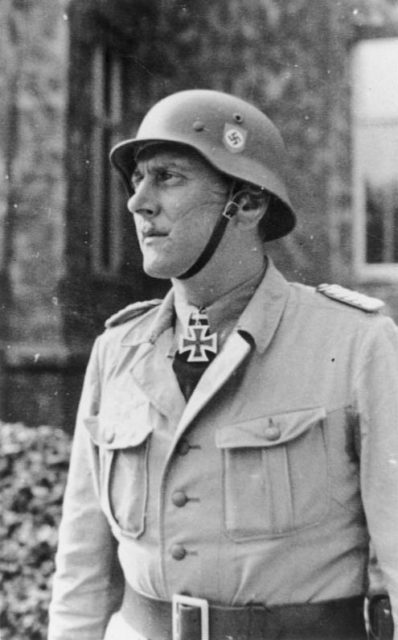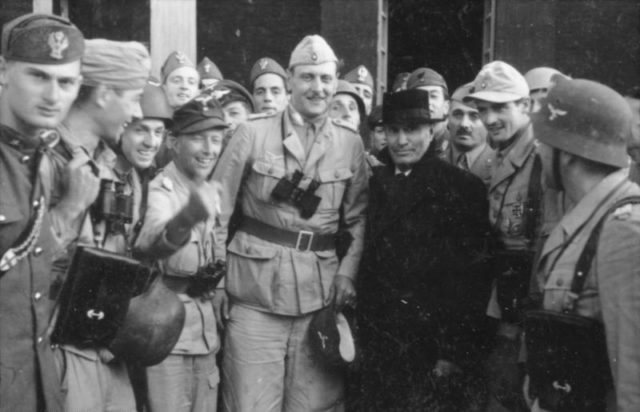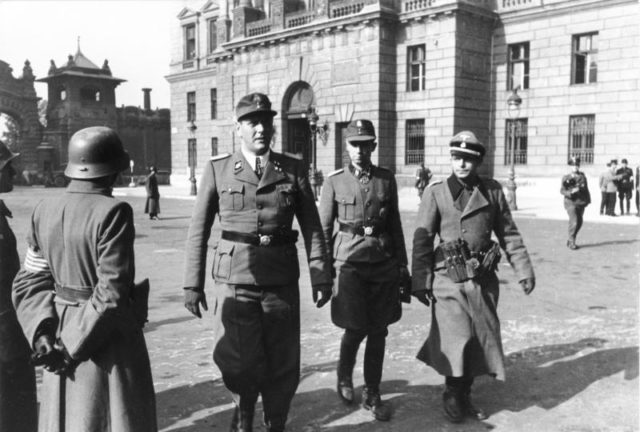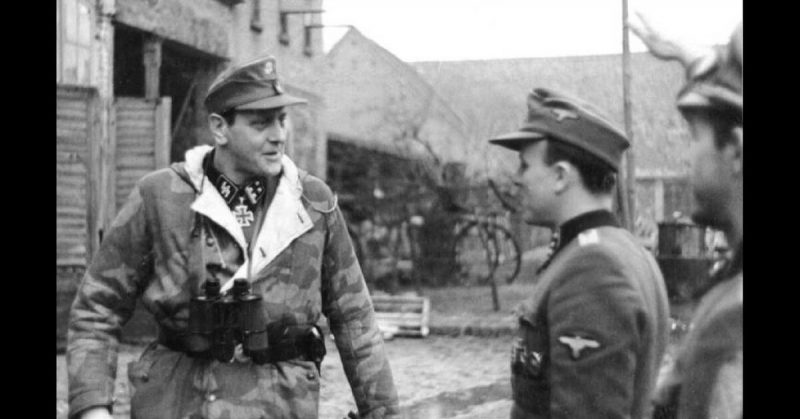In September 1943, Hitler sent SS commandoes to rescue his ally Mussolini from the new Italian government. For the man leading the raid, Otto Skorzeny, this was only the first in a series of extraordinary operations.
Path to the SS
Otto Skorzeny was born in Austria in 1908. His early experiences were shaped by an economic depression and the collapse of the Austro-Hungarian Empire, which caused disruption to millions of lives.
Skorzeny studied engineering at Vienna University. There, he was active in student dueling groups, gaining several scars and a reputation for aggression.
After university, he founded an engineering business in Vienna. Despite its success, he sought a change of career after the German annexation of Austria in 1938. A dedicated Nazi, he wanted to fight for the new regime. After being rejected by the Luftwaffe because of his age, he instead joined the SS.
Tall, scarred, and arrogant, he was a perfect fit for the ideologically-driven soldiers of the SS.
Founding the Hunting Group
In the early campaigns of the Second World War, Skorzeny served in Holland, Hungary, and Romania. At times, he was too aggressive even for the needs of the SS.
As an engineer, Skorzeny was not a frontline soldier. He still earned a citation for bravery while serving in Russia in the winter of 1941. There he was injured in a mortar strike.

In 1942, the Nazis set about creating a commando force to match those used by other powers. Skorzeny applied to be part of it, and in April took charge of the new Hunting Group.
He recruited specialist soldiers for the force. After struggling to get the supplies he needed, he used double agents in the Dutch underground to get them delivered by the British, who thought they were providing them to resistance fighters.
Rescuing Mussolini
In July 1943, the new Italian government imprisoned Mussolini and sought peace with the Allies. Hitler needed Mussolini to lead an alternative Italian regime. He ordered Skorzeny to rescue the Fascist leader.
After a false start, Skorzeny tracked Mussolini down to an Apennine ski resort.
The Hunting Group approached the lodge in gliders. Skorzeny’s crashed yards from the building. Leaping out, he immediately assaulted the building, overcoming the guards, smashing a radio, and capturing Mussolini in a matter of minutes.

The transport plane intended for a getaway had been damaged landing at the resort. Skorzeny, therefore, ordered the pilot of a spotter plane to come down and extract him and Mussolini. Between the hulking commando and the overweight dictator, the small plane was so overburdened that paratroopers had to hold up the wings during preparations for take-off.
The mission was a success. Skorzeny was personally congratulated by many senior Nazis and decorated for his achievement.
Opposition and Innovation
Skorzeny was a national hero. The high command authorized him to train more commandoes and develop new techniques. He used a range of tools including frogmen, mini-submarines, and specialist torpedoes against the Allies.
The Hunting Group faced resentment and opposition from the regular armed forces. These inter-service politics got in the way of an attempt to capture the Balkan leader Tito.
Skorzeny was in Berlin in July 1944. He witnessed first-hand the chaos that followed an attempt to assassinate Hitler, as top officials ran around bewildered and unsure who was on which side.
The Hungary Coup
Admiral Horthy, the aging dictator of Hungary, was wavering in his support for the Axis powers. If Hungary made peace with the Allies, it would be a disaster for Germany.
In October 1944, Skorzeny went undercover to Budapest. He and his men assessed the situation and saw that disaster was imminent. They kidnapped Horthy’s son.
Horthy responded by publicly renouncing Germany and announcing peace with Russia. Using cunning, diplomacy, and deception, Skorzeny swiftly took control of Horthy’s HQ at the Burgberg castle. Horthy became a prisoner of the Germans, and a new pro-German leader was installed.
It changed the allegiance of a country in the war. It was a more significant success politically than the rescue of Mussolini, but it is often overshadowed due to Mussolini’s fame.
In the Ardennes: The Most Dangerous Man in Europe
Hitler then gave Skorzeny another task. He recruited 3,000 English-speaking soldiers to a special group.
As the Germans launched their offensive in the Ardennes in December 1944, these troops crossed the lines. Disguised as Allied troops, they were meant to misdirect units, cut communications, and hinder any counter-attacks.

The deception was quickly detected, but it left the Allies suspicious. No-one knew who to trust. Units arrested their own officers. Fears for General Eisenhower’s safety left him almost a prisoner in his headquarters.
The Allies dubbed Skorzeny, the most dangerous man in Europe.
Despite the success of Skorzeny’s troops, the Ardennes advance was halted. Skorzeny’s men joined the regular German forces. He was injured by shrapnel and had to spend time away from the lines.
Chaos Amid the Ashes
As the Reich crumbled, Skorzeny was caught up in the schemes of desperate leaders trying to cling to power. He was sent on fruitless missions in Russia and on the Rhine. He argued with Himmler when ordered to do jobs for which he lacked the resources.
In the dying days of the war, Skorzeny retreated to the Alps with some of the Hunting Group. After the armistice, he surrendered to the Americans.
A Secret Soldier
In 1947, Skorzeny faced a war-crimes tribunal and was found not guilty. With some countries seeking his deportation, he remained in a prison camp until rescued by former SS colleagues.
Skorzeny continued to use his training as a covert warrior. During the Cold War, he worked for organizations including the CIA, the Argentine Secret Police, and the Egyptian government. His activities, which included training guerrillas, were shrouded in secrecy. He spent a lot of time living under sympathetic regimes in Argentina and Spain.
He died of cancer in 1975. His funeral included Nazi symbols. His skills had made him so useful to post-war governments that he had never had to renounce his old beliefs.
Source:
David Rooney (1999), Military Mavericks: Extraordinary Men of Battle.
